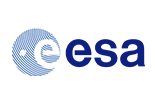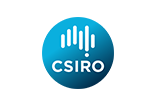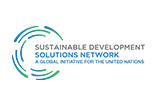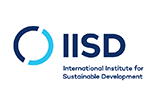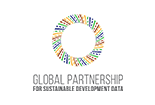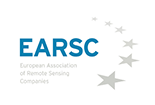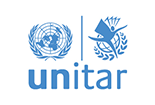CEOS Earth Observation Handbook
The Committee on Earth Observation Satellites (CEOS) released the CEOS Earth Observation Handbook for the Sustainable Development Goals (SDGs) with contributions from EO4SDG, the UN Statistics Division, Mexico’s National Institute of Statistics and Geography (INEGI), Australia’s Bureau of Statistics, the UN Food and Agriculture Organization (FAO), and the UN Habitat, among others.
You can access 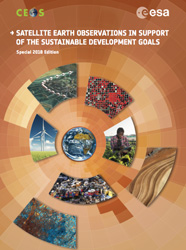 and download the digital document here.
and download the digital document here.
UN-GGIM Foreword
The integration of statistics, geospatial information, Earth observations, and other sources of Big Data, combined with new emerging technologies, analytics and processes, are becoming a fundamental requirement for countries to measure and monitor local to global sustainable development policies and programs. Today a large proportion of the global community have an entirely different set of Earth observations and geospatial information uses, needs and expectations than they did 10 years ago. But more is needed.
Adopted by the United Nations General Assembly in September 2015, the broad and transformative nature of the 2030 Agenda for Sustainable Development has ushered in a new era in thinking about global development. With 17 Sustainable Development Goals (SDGs), 169 targets and a global indicator framework, presently consisting of 232 indicators, the 2030 Agenda requires us to consider new and innovative means to curtail the many development challenges in order to ‘leave no one behind’, and with commensurate new and innovative data sources and methods. As the implementation of the 2030 Agenda gains momentum, Member States and the global community are now also beginning to understand the commensurate prospects for using Earth observations and geospatial information as fundamental inputs for realizing the 2030 Agenda.
The United Nations Committee of Experts on Global Geospatial Information Management (UN-GGIM) is advancing new approaches to data by implementing a global policy framework that will enable countries to better integrate geospatial and other key information into global development policies and into their own national plans. Established in 2011, UN-GGIM sets directions for the production and use of geospatial information within national and global policy frameworks, and for building and strengthening geospatial information capacity of nations, especially of developing countries. Through partnerships within the UN system and with organizations such as the World Bank, the Group on Earth Observations (GEO), the Committee on Earth Observations Satellites (CEOS), and other global actors, our combined ability to contribute towards an interconnected data ecosystem that will allow Member States to properly plan for and implement the SDGs, will be realized.
CEOS has a long and well recognized history for producing publications that promote the importance of satellite Earth observations in support of society’s challenges. This latest Handbook continues that rich and valuable journey, and focusing on the contribution of satellite Earth observations in support of the Sustainable Development Goals, their targets and global indicator framework. The Handbook provides us with valuable global sustainable development and Earth observations context and guidance, and then captures the different dimensions and perspectives on the role and importance of Earth observations data, including specific examples, for supporting the implementation of the SDGs. Importantly, the Handbook recognizes and informs National Statistical Offices and the broader statistical community as to how geospatial information, Earth observations and other new data sources can reliably and consistently contribute to the 2030 Agenda for Sustainable Development.
The ways in which the aspirations of the 2030 Agenda have been embraced by the global community has been quite phenomenal and has generated great expectations for us to make real development progress. This Handbook is a significant and strategic contribution towards guiding the way in which countries collectively manage and transform the social, economic and environmental dimensions of people and the planet through to at least 2030.
By: Dr. Li Pengde, Deputy Director General, National Administration of Surveying, Mapping and Geoinformation (NASG) of China, Co-Chair, UN-GGIM & Ms. Dorine Burmanje, Chairperson Executive Board, The Netherlands Cadastre, Land Registry and Mapping Agency, Co-Chair, UN-GGIM
CEOS Message
The Committee on Earth Observation Satellites (CEOS) – established under the aegis of the G7 Economic Summit of Industrial Nations in 1984 – ensures international coordination of the civil Earth-observing programmes of more than 30 of the world’s leading space agencies. These agencies are collectively investing billions of dollars in space infrastructure with the capability to provide precise, continuous and sustained observations of the entire planet. Recognising that no single country can satisfy all of the observational requirements necessary for monitoring of the Earth system, governments are taking steps through CEOS to harmonise and integrate their observing network.
The 2030 Agenda for Sustainable Development and the Sustainable Development Goals (SDGs) represent a milestone in our progress towards a sustainable society, being the first data-driven international framework for development policies. The 2030 Agenda seeks to serve all countries, and effective reporting over the next 15 years will require significant effort in the utilisation of supporting data. In combination with the traditional statistical, socio-economic data used by countries, geospatial information and Earth observations, with modern data processing and big data analytics, offer unprecedented opportunities to make a quantum leap in the capacities of countries to efficiently track all facets of sustainable development and to make viable the prospect of a global indicator framework for the SDGs.
This report has been compiled to help develop a broader understanding of the fundamental, strategic importance of satellite Earth observation data to the 2030 Agenda. Satellites have a role to play in relation to most of the agreed Goals and have been shown to have the potential to support national reporting against a quarter of the associated targets, and to inform national development policies. Satellite data providers and enablers have already taken steps through CEOS and the Group on Earth Observations (GEO) to ensure coordination of their engagement with the 2030 Agenda. These efforts must be linked effectively to the work of the UN Agencies and other international partners, responsible as ‘Custodian Agencies’ for the development of workable and robust methodologies for the reporting by countries against the SDG Indicator Framework. National Statistical Offices must also be supported in understanding the opportunities and the challenges inherent in the application of large Earth observation datasets for the development of evidence. Individual countries are the most important players as the implementers of the SDGs and of the resulting development policies. We are confident that this CEOS Report on SDGs can serve as a valuable reference source for a variety of readers from all sectors of society, including those engaged in the 2030 Agenda process, as well as decision-makers in political and socio-economic sectors. It is our firm belief that satellite Earth observations can support the realisation of the promise of the SDGs to ensure that no one is left behind.
By: Dr. Philippe Brunet, Director for Space Policy, Copernicus and Defence Directorate-General Internal Market, Industry, Entrepreneurship and SMEs, European Commission CEOS Chairperson for 2018 & Dr. Josef Aschbacher, Director of Earth Observation Programmes, European Space Agency (ESA)
View All News





